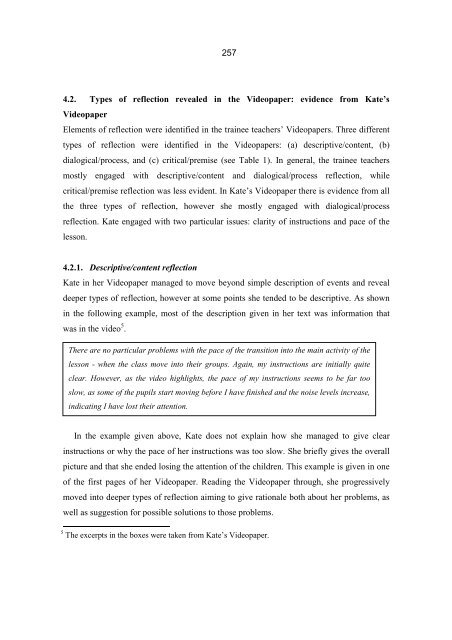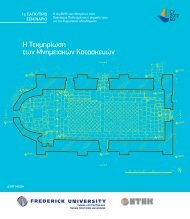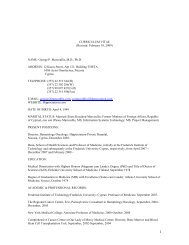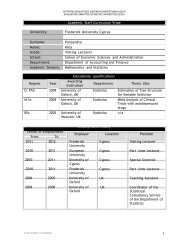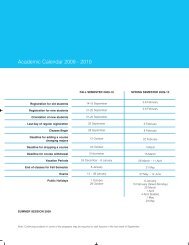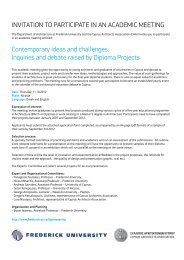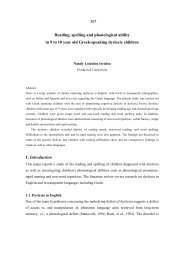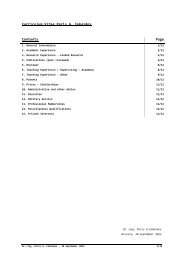Videopaper and teacher education Student teachers create ...
Videopaper and teacher education Student teachers create ...
Videopaper and teacher education Student teachers create ...
Create successful ePaper yourself
Turn your PDF publications into a flip-book with our unique Google optimized e-Paper software.
257<br />
4.2. Types of reflection revealed in the <strong>Videopaper</strong>: evidence from Kate’s<br />
<strong>Videopaper</strong><br />
Elements of reflection were identified in the trainee <strong>teacher</strong>s’ <strong>Videopaper</strong>s. Three different<br />
types of reflection were identified in the <strong>Videopaper</strong>s: (a) descriptive/content, (b)<br />
dialogical/process, <strong>and</strong> (c) critical/premise (see Table 1). In general, the trainee <strong>teacher</strong>s<br />
mostly engaged with descriptive/content <strong>and</strong> dialogical/process reflection, while<br />
critical/premise reflection was less evident. In Kate’s <strong>Videopaper</strong> there is evidence from all<br />
the three types of reflection, however she mostly engaged with dialogical/process<br />
reflection. Kate engaged with two particular issues: clarity of instructions <strong>and</strong> pace of the<br />
lesson.<br />
4.2.1. Descriptive/content reflection<br />
Kate in her <strong>Videopaper</strong> managed to move beyond simple description of events <strong>and</strong> reveal<br />
deeper types of reflection, however at some points she tended to be descriptive. As shown<br />
in the following example, most of the description given in her text was information that<br />
was in the video 5 .<br />
There are no particular problems with the pace of the transition into the main activity of the<br />
lesson - when the class move into their groups. Again, my instructions are initially quite<br />
clear. However, as the video highlights, the pace of my instructions seems to be far too<br />
slow, as some of the pupils start moving before I have finished <strong>and</strong> the noise levels increase,<br />
indicating I have lost their attention.<br />
In the example given above, Kate does not explain how she managed to give clear<br />
instructions or why the pace of her instructions was too slow. She briefly gives the overall<br />
picture <strong>and</strong> that she ended losing the attention of the children. This example is given in one<br />
of the first pages of her <strong>Videopaper</strong>. Reading the <strong>Videopaper</strong> through, she progressively<br />
moved into deeper types of reflection aiming to give rationale both about her problems, as<br />
well as suggestion for possible solutions to those problems.<br />
5 The excerpts in the boxes were taken from Kate’s <strong>Videopaper</strong>.


